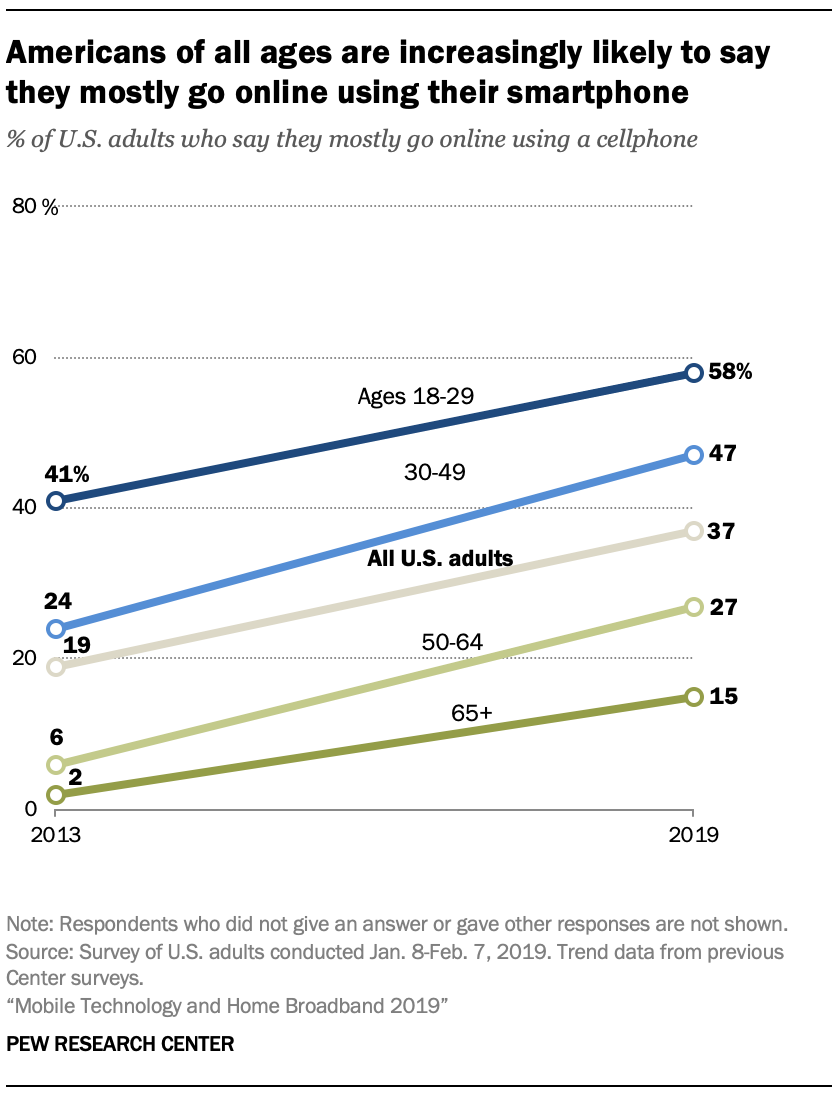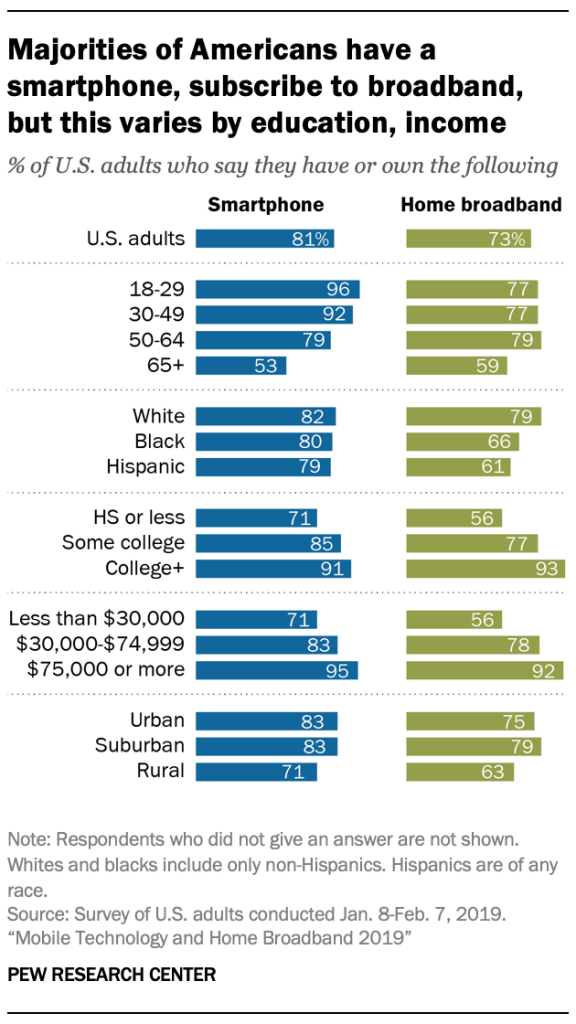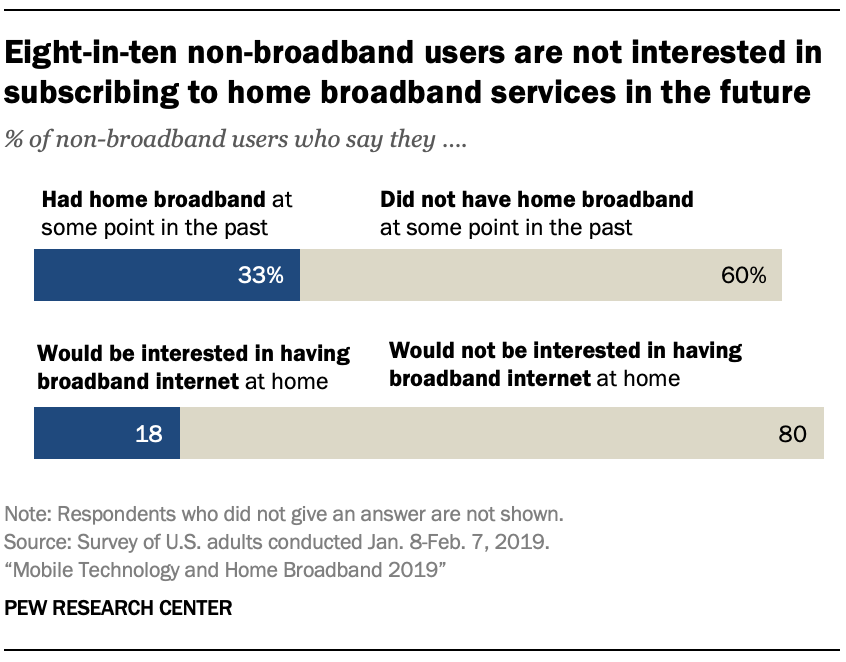Pew Research Center Releases New Survey Findings on Mobile Technology and Home Broadband Usage in USA
From the Pew Research Center:
As the share of Americans who say they own a smartphone has increased dramatically over the past decade – from 35% in 2011 to 81% in 2019 – a new Pew Research Center survey finds that the way many people choose to go online is markedly different than in previous years.
Today, 37% of U.S. adults say they mostly use a smartphone when accessing the internet. This share has nearly doubled since 2013, when the Center last asked this question. At that point, 19% of Americans named their smartphone as their primary device for going online.
Younger adults are especially likely to reach for their phones when going online. Fully 58% of 18-to-29-year-olds say they mostly go online through a smartphone, up from 41% in 2013. Still, this growth is evident across all age groups. For example, the share of adults ages 30 to 49 who say they mostly use a smartphone to go online has nearly doubled – from 24% in 2013 to 47% today.
[Clip]
A majority of adults say they subscribe to home broadband, but about one-in-four (27%) do not. And growing shares of these non-adopters cite their mobile phone as a reason for not subscribing to these services.
Among non-broadband users, 45% say they do not have broadband at home because their smartphone lets them do everything they need to do online, up from 27% in 2015. At the same time, the share of non-broadband users who say their smartphone is the most important reason for not having a high-speed internet connection where they live has nearly doubled over the same time period (from 12% to 23%). And while affordability remains a commonly cited barrier, the share of non-broadband adopters who say the cost of a monthly subscription is the most important reason for not having these services has fallen from 33% in 2015 to 21% today.
[Clip]
In general, smartphone reliance tends to be more common among groups who also have lower levels of broadband adoption. Some 26% of adults who have a high school education or less are smartphone only internet users. By comparison, 16% of those with some college experience and only 4% of college graduates fall into this category. Lower-income adults are also more likely than those in higher-earning households to be smartphone only internet users.
Racial and ethnic gaps are also present: One-quarter of Hispanics and a comparable share of blacks are smartphone only internet users, compared with about one-in-ten whites.
[Clip]
Six-in-ten non-broadband users say they have never had high-speed internet service at home in the past, while one-third indicate that they had previously subscribed to these services. And when asked if they are interested in having home broadband in the future, most non-adopters are unenthusiastic about the prospect. Fully 80% of non-broadband users say they would not be interested in having broadband at home, while 18% think this is something they would consider in the future. These sentiments are on par with those found in the Center’s 2015 survey.
Direct to Full Text Report
Direct to Full Text Report: PDF Version (23 pages)
Filed under: News, Patrons and Users
About Gary Price
Gary Price (gprice@gmail.com) is a librarian, writer, consultant, and frequent conference speaker based in the Washington D.C. metro area. He earned his MLIS degree from Wayne State University in Detroit. Price has won several awards including the SLA Innovations in Technology Award and Alumnus of the Year from the Wayne St. University Library and Information Science Program. From 2006-2009 he was Director of Online Information Services at Ask.com.





